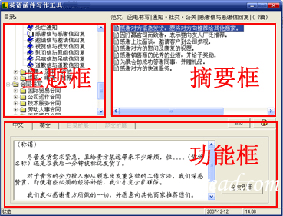Current assets
|
Current assets are defined as cash and other assets that are reasonably expected to be realized in cash or to be sold or consumed within one year or within the normal operating cycle of the business, whichever is longer. In addition to cash, current assets typically include temporary investments in marketable securities, notes receivable, accounts receivable, merchandise inventory and prepaid expense. Within the current asset category, the items are listed in the order of their liquidity, the most liquid first and the least liquid last. Cash is obviously the most liquid of all assets. In accounting, cash includes coins, paper money, bank drafts, money orders and checks, and money on deposit with banks or savings institutions. Because cash has a high degree of liquidity, adequate control must be maintained for handling cash to prevent theft and the misappropriation of funds. A good system of control divides the receiving, recording, disbursing, and depositing of cash among several individuals. All cash receipts should be recorded and deposited daily. Normally all payments of material amounts are made by check. Small payments that are impractical to make with a check are paid out of the petty cash fund. A petty cash fund is usually established for an amount sufficient to handle the payment of small expenditures for a period of month or a reasonable length of time. At the end of the period, or when the fund is exhausted, the petty cash fund is replenished and the payments made from the fund are recorded in accounting records.A voucher system helps maintain control over cash disbursements. 流动资产被定义为现金或其他可以被认为是现金或可以在一年或一个会计周期(两者的长者)出售的资产。除了现金,典型的流动资产还包括短期投资,包括可交易证券、应收票据、应收账款、存货和预付费用。在流动资产类别中,各个项目以流动性列示,最具有流动性的排在第一位,流动性最差的排在最后一位。现金明显是所有资产中最具有流动性的资产。在会计学中,现金包括硬币、纸币、银行汇票、汇款单和支票,存款在银行和储蓄机构的存款。因为现金有高流动性,必须采取适当的控制手段来防止偷窃和盗用现金。一个好的控制系统应由不同的人负责收入、记录、支付和储存。所有的现金收据应该被每日记录和存放。通常所有大额款项由支票支付。那些没有必要用支票支付的小额款项由小额库存现金支付。小额库存现金通常被估计足以维持支付一个月或合理时间内的小额费用。在会计期末或库存现金耗尽时,小额库存现金会被补充,从库存现金的每次支付将以会计凭证的形式记录。一个凭单系统帮助维护控制现金支付。 Every month the company will receive a statement form the bank. The bank statement will show the beginning and ending cash balance deposits,collections made by the bank for the company, checks paid, deductions from service fees and other charges. The cash balance shown on the bank statement usually does not agree with the balance of cash account shown in the accounting records. Upon receipt of the bank statement, the company prepares a bank reconciliation statement to determine the reasons for any differences in the amount of cash as shown on the bank statement and the amount of cash shown on the book of company. When the reconciliation is performed, the bank statement is adjusted for such items as outstanding checks and deposits in transit. The records of the depositor are adjusted for such items as service charges, collections of notes and drafts the bank had made for the depositor, and interest earned on the average checking account balance. Investments of surplus cash must be in a varies of government or corporation debt obligations (debt securities) or in stocks (equity securities)。 If the investment can be converted into cash quickly, and if management intends to hold the investments as a source of cash to satisfy the needs of current operations, the investments are called short-term investments. Investments in debt obligations usually are maintained in the accounts at cost until they are sold or mature. However, a temporary investment in equity securities must be carried at the lower of its total cost or market value at the balance sheet date. Dividends, interest, gains and losses on the investments are recorded in appropriate income statement accounts. Prepaid expenses are payments made in advance for the use of goods and services, such as insurance, property taxes, and interest. For example, the cost of a one-year insurance policy paid in advance is a prepaid expense. Prepaid expenses are listed last among the current assets. Unlike other current assets, prepaid expenses will not be converted onto cash.Nevertheless, prepaid expenses substitute for future cash payments that would be required if the expenses had not been paid. Therefore, prepaid expenses are listed as current assets until their benefit expires or they are used up. 每个月企业会收到银行的对帐单。银行对帐单将显示前后现金存款余额。对帐单将显示从期初到期末由于支票支付、服务费支出和其他费用支出产生的现金存款变化情况。银行报表上的现金收支情况通常与帐薄记录不相符。一收到银行对帐单,企业就编制银行余额调节表来确认使银行报表现金余额与帐薄现金余额不一致的原因。编制调节报表时,银行报表上的一些项目就需要被调整(如开出支票、在途存款)。存款记录中银行为企业收的支票、汇票、支票帐薄中的平均余额利息需要调整。过剩的现金投资必须是以政府或企业债权(债券)或股票(等价债券)的形式存在。如果投资可以迅速转化为现金,且管理的意图是将投资做为满足流动性操作的要求,这种投资被称为短期投资。债权投资在帐户中以成本记录,直到出售或到期。然而,权益证券(短期投资中为获得短期收益而持有的证券)方式的临时投资必须在资产负债表日以原成本和市场价格孰低的方式显示。 投资中的分红、利息、收益、和损失被记录在相应的损益表帐户中。 预提费用是用于今后货物和服务使用(如保险、相应税款和利息)而提前支付的费用。例如:今后要支付的一年期保险单就是一种预提费用。预提费用被列示在流动资产的最后一项。与其他资产不一样,预提费用不能转化为现金。然而,预提费用是为预计将要支付的费用的现金储备。所以,预提费用被作为流动资产列示,直到他们的权益到期或被耗尽。 Accounts receivable are amounts currently owed by customers who have purchased goods and services on short- term credit. At the date of the credit sale, Account Receivable is debited and Sales Revenue is credited.Sometimes companies offer a cash discount (also called a sales discount) to encourage early payment by the customer and sales can be recorded at its gross amount or net of allowed discount amount.When credit is extended to customers, some uncollectible receivables are inevitable. The operating expense methods of accounting for receivables that are believed to be uncollectibel the direct write-off method and the allowance method. Under the direct write-off method, uncollectible accounts are charged to expense in the period when they are discovered to be uncollectible . the major shortcoming of the direct write- off method is that credit losses are not matched off with related sales. Since generally accepted accounting principles proscribe that receivables be shown at the amount of the firm expect to collect, most businesses prefer the allowance method.Under the allowance method, companies estimate the amount of the uncollectible accounts expense that will eventually result from a period‘s sale in order to reflect the expense during the same period.This procedure not only matched credit losses with related revenue, but also results in an estimated realizable amount for accounts receivable in the balance sheet at the end of the period. 应收帐款是那些客户以短期信贷购买商品或服务的金额合计数。在赊销日内,应收帐款记为借方,销售收入记为贷方。有的时候公司提高现金折扣(也叫做销售折扣)来鼓励客户尽早还款,销售以其总金额或允许的销售折扣的净额记录。 当信贷拓展到客户,呆帐就不可避免。由于该收回的帐款未能回收(被称为坏帐损失),坏帐费用产生就不可避免。坏帐损失帐务处理有两种形式:直接冲销法和备抵法。 使用直接冲销法时,坏帐出现的当期即作为费用(冲减损益)。主要的缺点在于直接冲销法使信贷损失无法与相关的销售配比。因为总的会计准则将禁止应收帐款显示在企业预期收入中,大多数企业选择备抵法。 采用备抵法时,公司根据同期销售产生的同比坏帐损失来预计产生坏帐费用金额总数。这个过程不仅要求相关收入与贷款金额数配比,而且要求显示在会计期末资产负债表中的以应收帐款估计的合理费用总额。 |








